The sunrise on Tuesday, February 11 again looked like there was a fire in the sky that was giving off a lot of smoke.
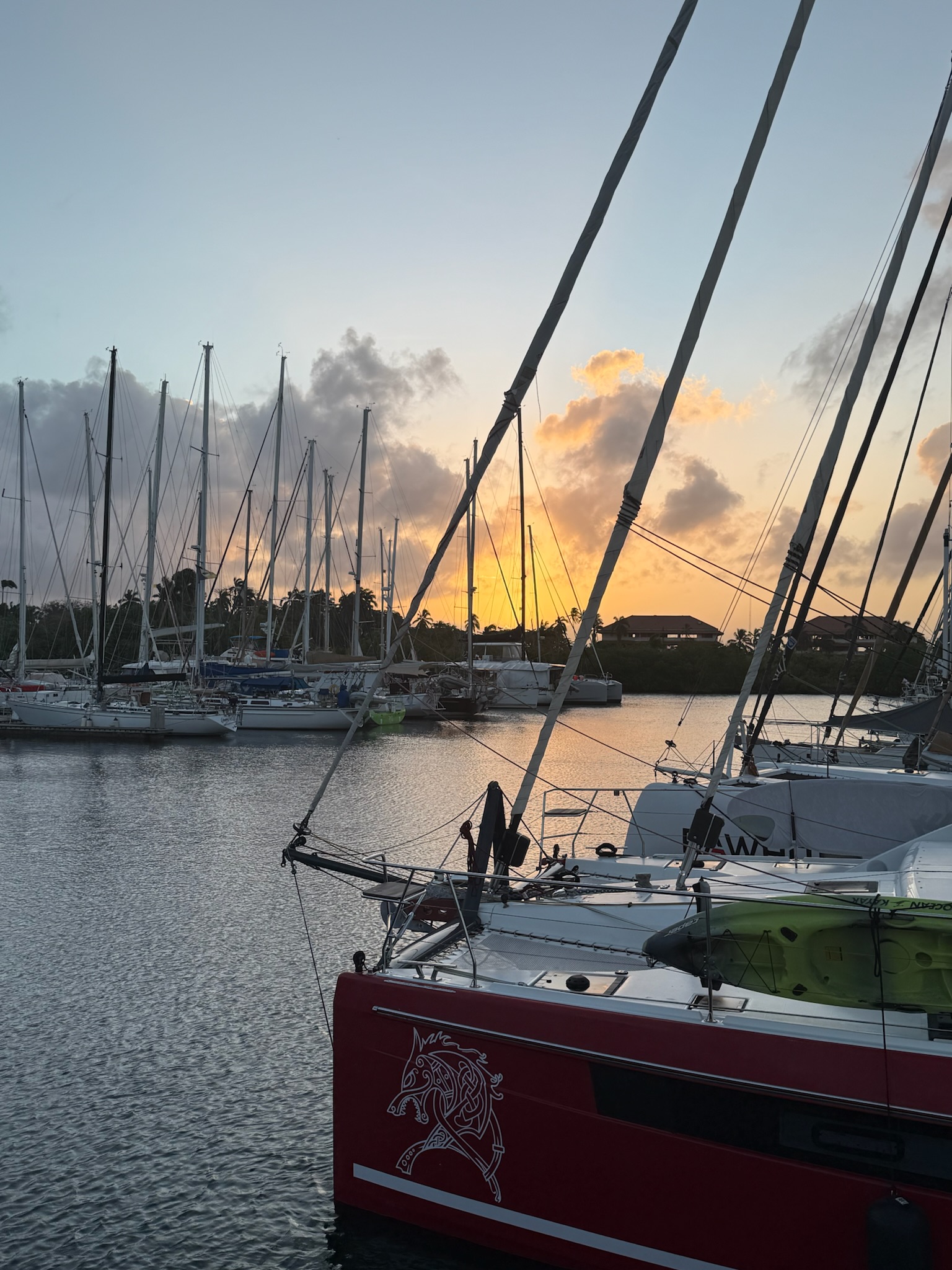
Tuesday was another quiet day. We’ve found another downside to being right in front of the marina. In the morning, the marina mowed the lawn, and the wind blew grass clippings all over the boat. Eric determined that the wind generator was working well, so after he cleaned off the grass, he turned off the wind generator and brought the dinghy back onboard.
On Wednesday morning, Eric changed the wing engine fuel filter. It was easier than, but also messier than, anticipated. In the early afternoon, Eric led a D & D session with Keith and several of the kids in the marina.
In the evening, we went on a nature walk with Carlos, who works at the marina. His hobby is botany, and he does these nature walks as a side gig. Several people had recommended that we hire him, but up until now, he’d been booked solid with ARC boats. Now most of the ARC boats were gone and he had time for us.
Carlos had been a young teen when the US military left Panama (in 1999). His brother had been working at Ft. Sherman as a contractor. Carlos had tagged along with his brother and remembered what the base looked like back then.
He started the tour by explaining that during canal construction, there was a lot of excess dirt that the military utilized to create land. He said much of the flat area within Ft. Sherman, particularly near the edge of Limon Bay, was man-made, including this cove. While Carlos was talking, the resident lizard came out to say hi.
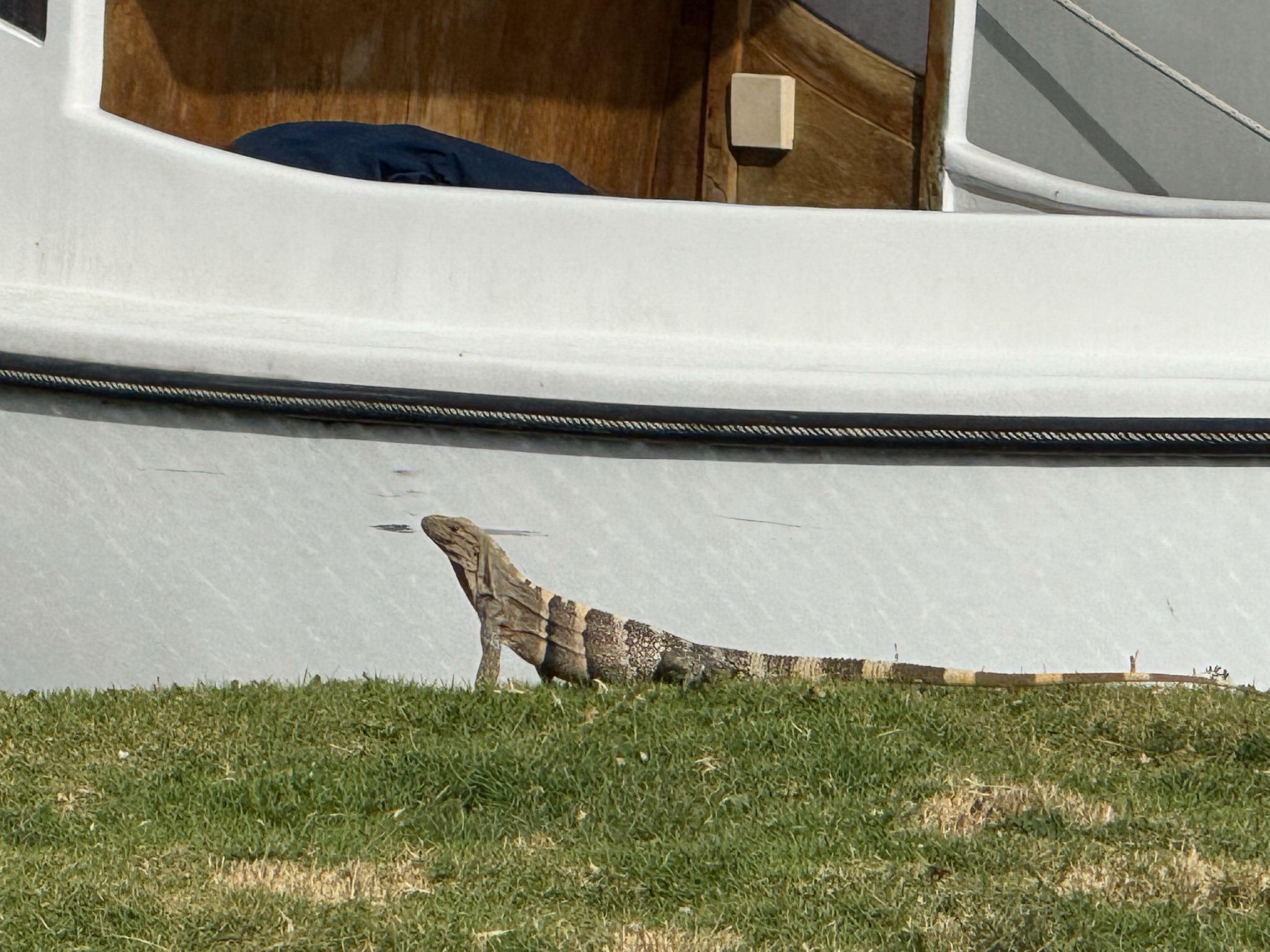
The little peninsula that the marina was in had been a recreational area. The cove was used for windsurfing. The building that is now where sails were made had been a movie theater.
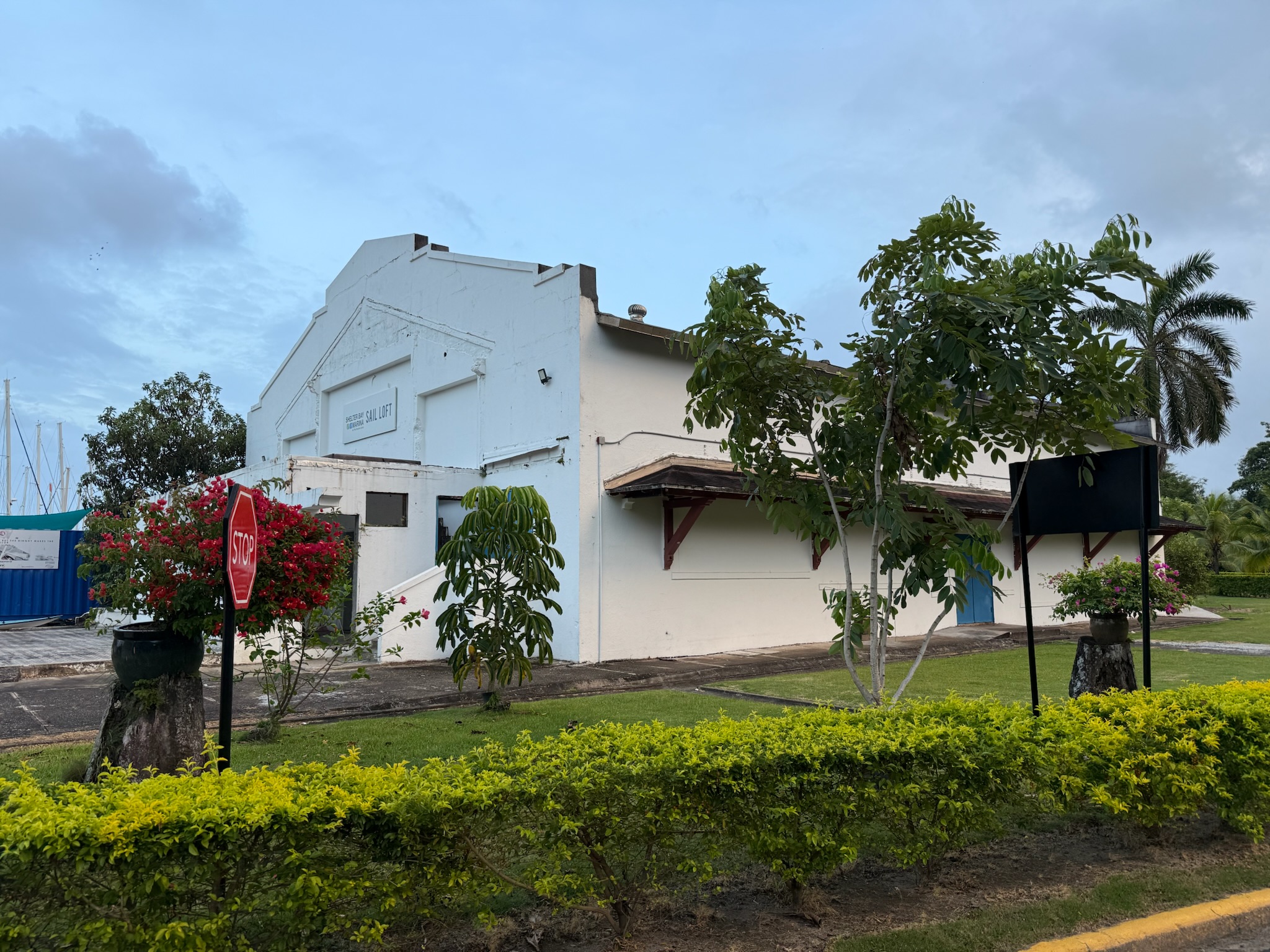
There had been a musical building and several other fun activities for the military families. The lighthouse at the tip of the peninsula had been designed by Gustav Eiffel. The French hadn’t gotten around to building it before they went bankrupt, so the Americans built it per Eiffel’s design.

He pointed out some of the food producing trees that had been planted in the marina area. We walked down the road towards the old church, when he pointed out which plants were indigenous and which were imported. Several of the imported plants have changed the ecosystem of the area, spreading beyond what was the canal zone. The worst offender was elephant grass.

Many of the indigenous plant species have unique characteristics that made them well-suited for the jungle, such as trees with spikes in the bark that can’t be eaten by ground predators.
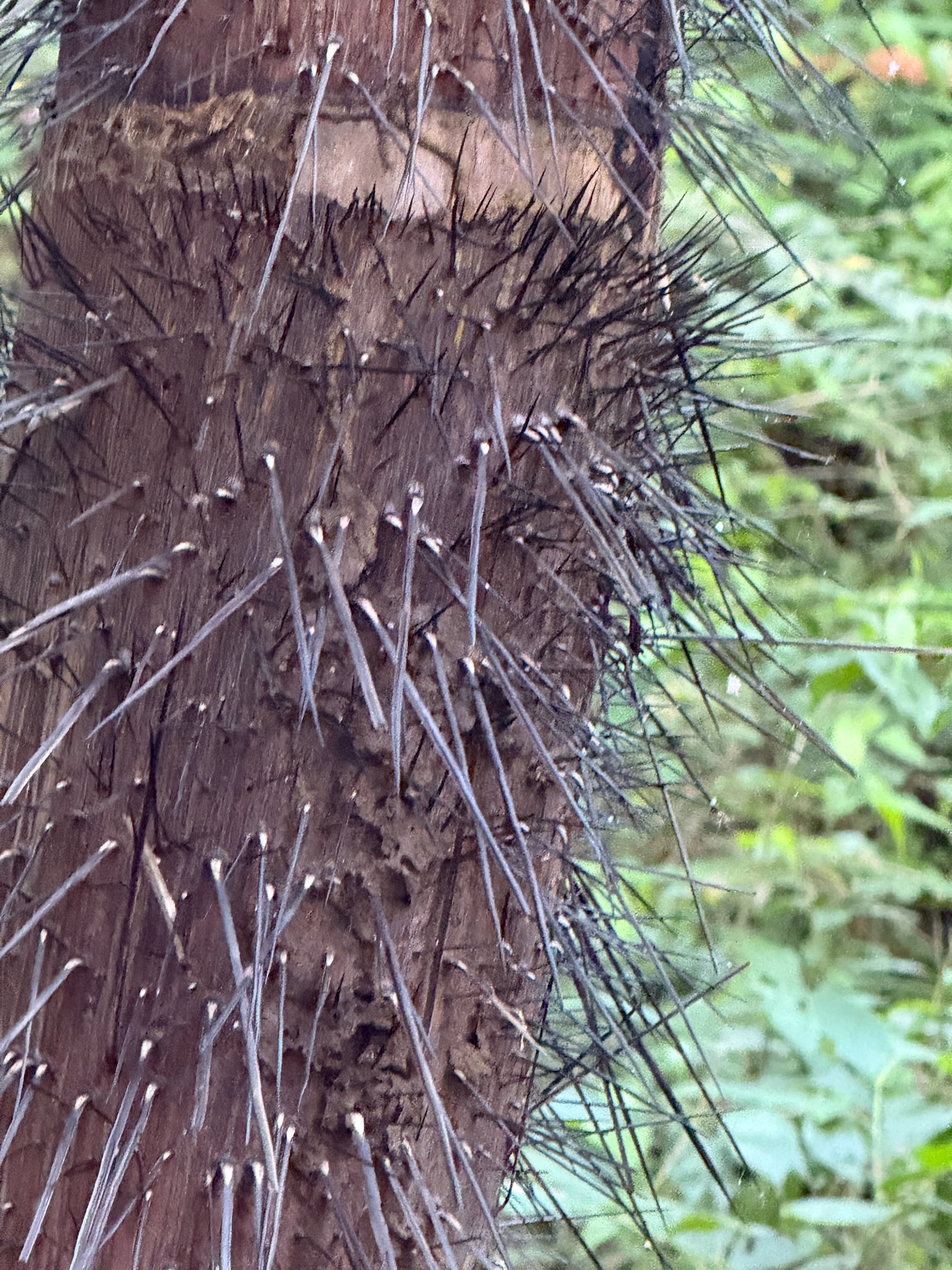
Carlos explained that, while the jungles of the San Lorenzo National Park still had predators, such as jaguars, the US military had eliminated all predators from the Ft. Sherman grounds. There was no species here that would harm a human.
We saw several coatis grazing. Carlos said the coatis tend to thrive because they eat a wide variety of foods. We asked about the racoons in La Playita and Carlos confirmed that they were a species of raccoon. Then we saw capuchin monkeys in the trees!
We went into the church. Carlos told us that this hadn’t been the only church; there had been many denominations on the base. Carlos told us that the military had left all the buildings in pristine condition, but the Panamanian government wasn’t equipped to deal with the cost of maintaining and protecting the buildings. Looters got in and took everything of value, and the buildings have been eroding ever since.
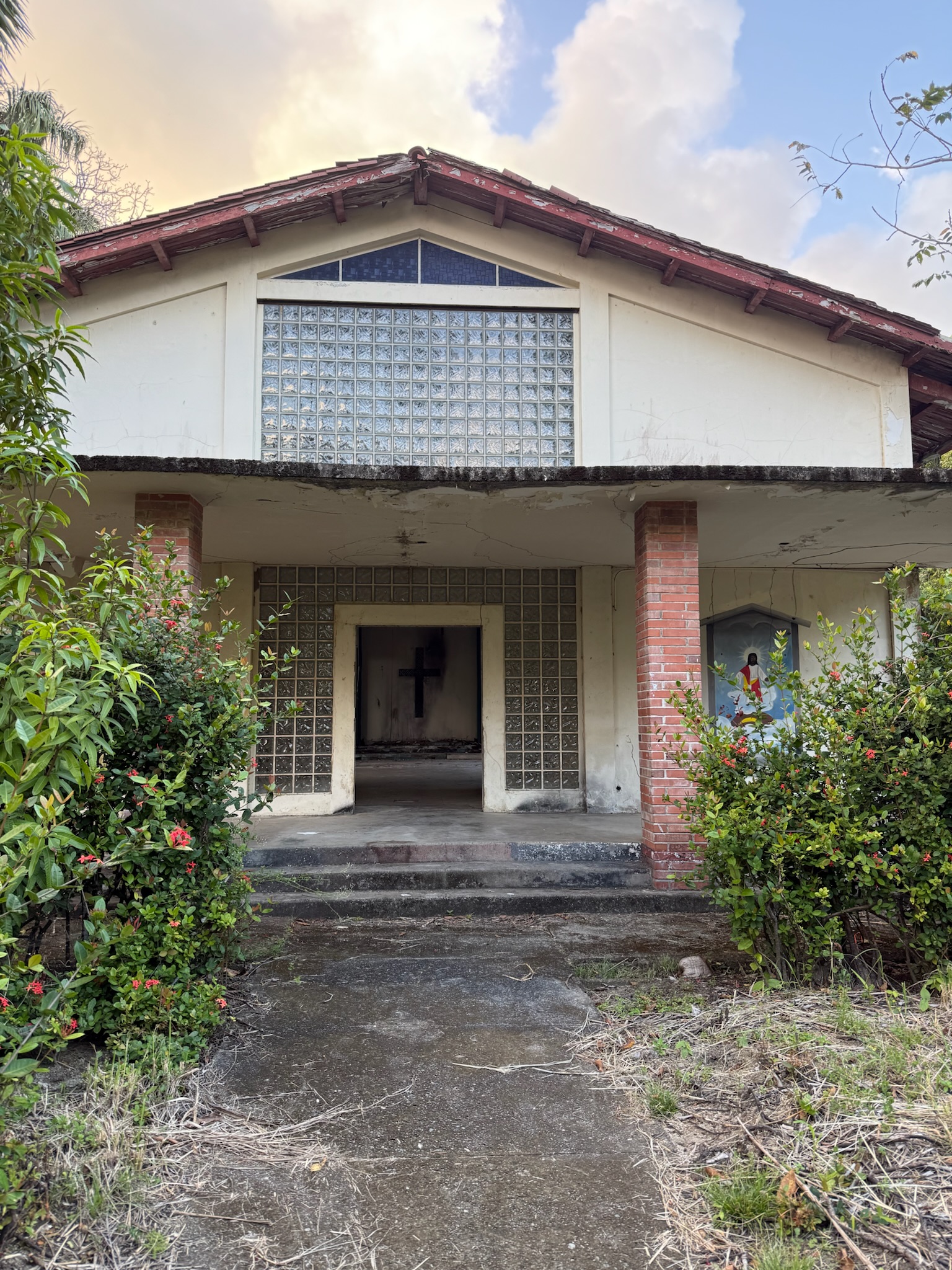
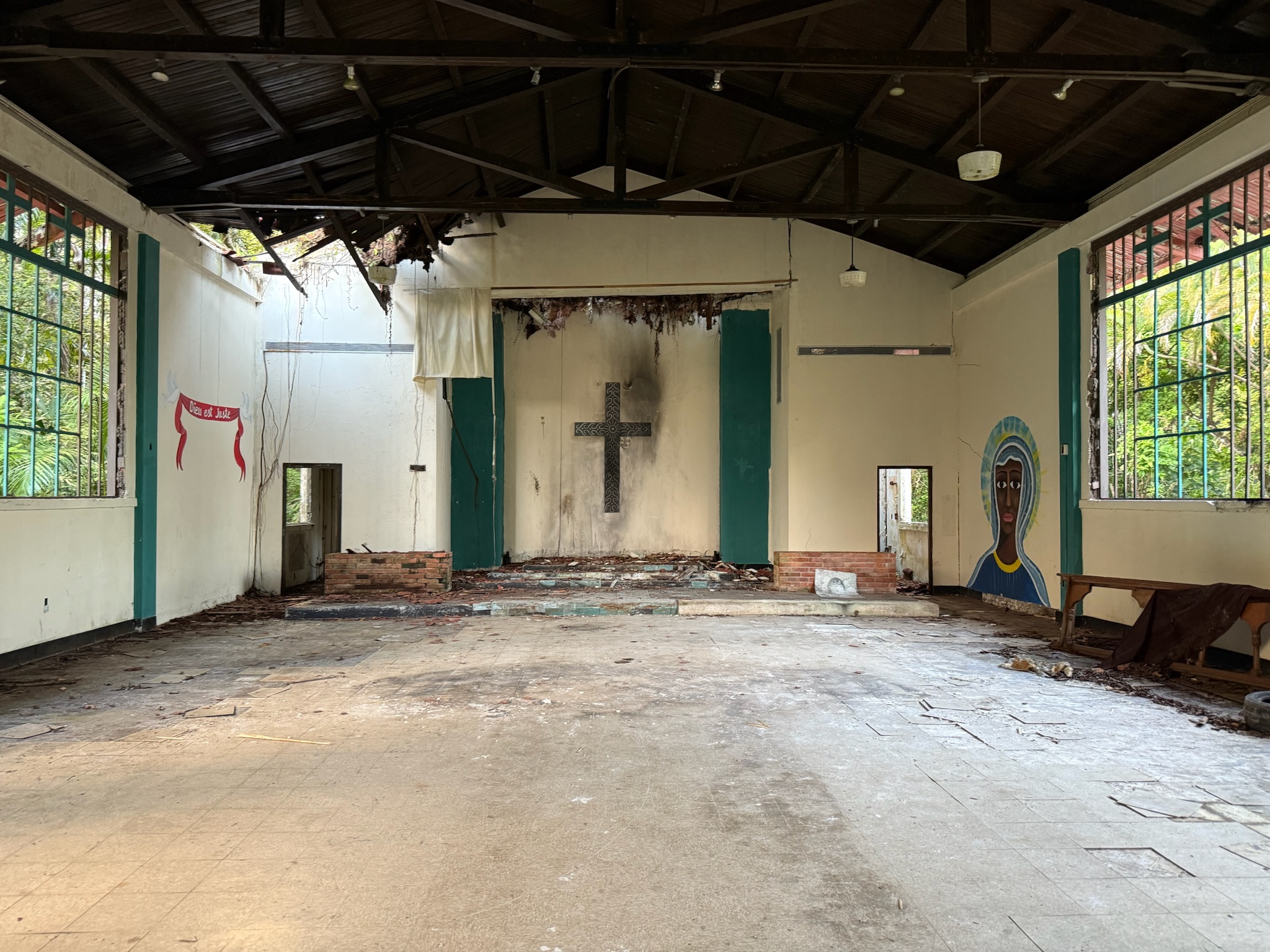
We walked behind the church and went into the fenced area that we’d previously by-passed. It was lined with empty cages. This was the former zoo that Susan and Tom had taken us to fifteen-years ago. Carlos talked about how times have changed – that nowadays, such small cages were considered cruel, but they were standard size cages back then. They even had a cage with crocodiles and alligators!
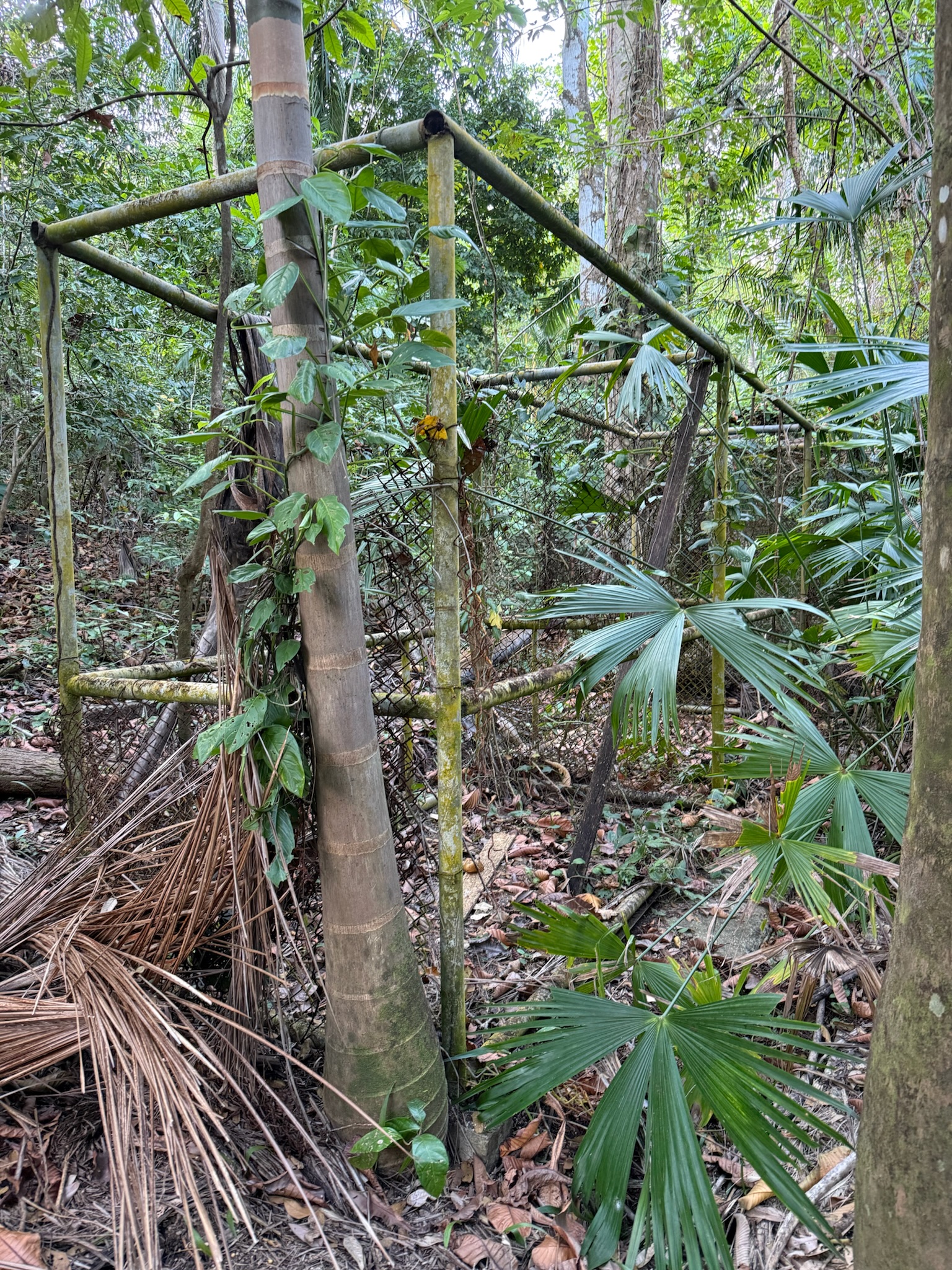
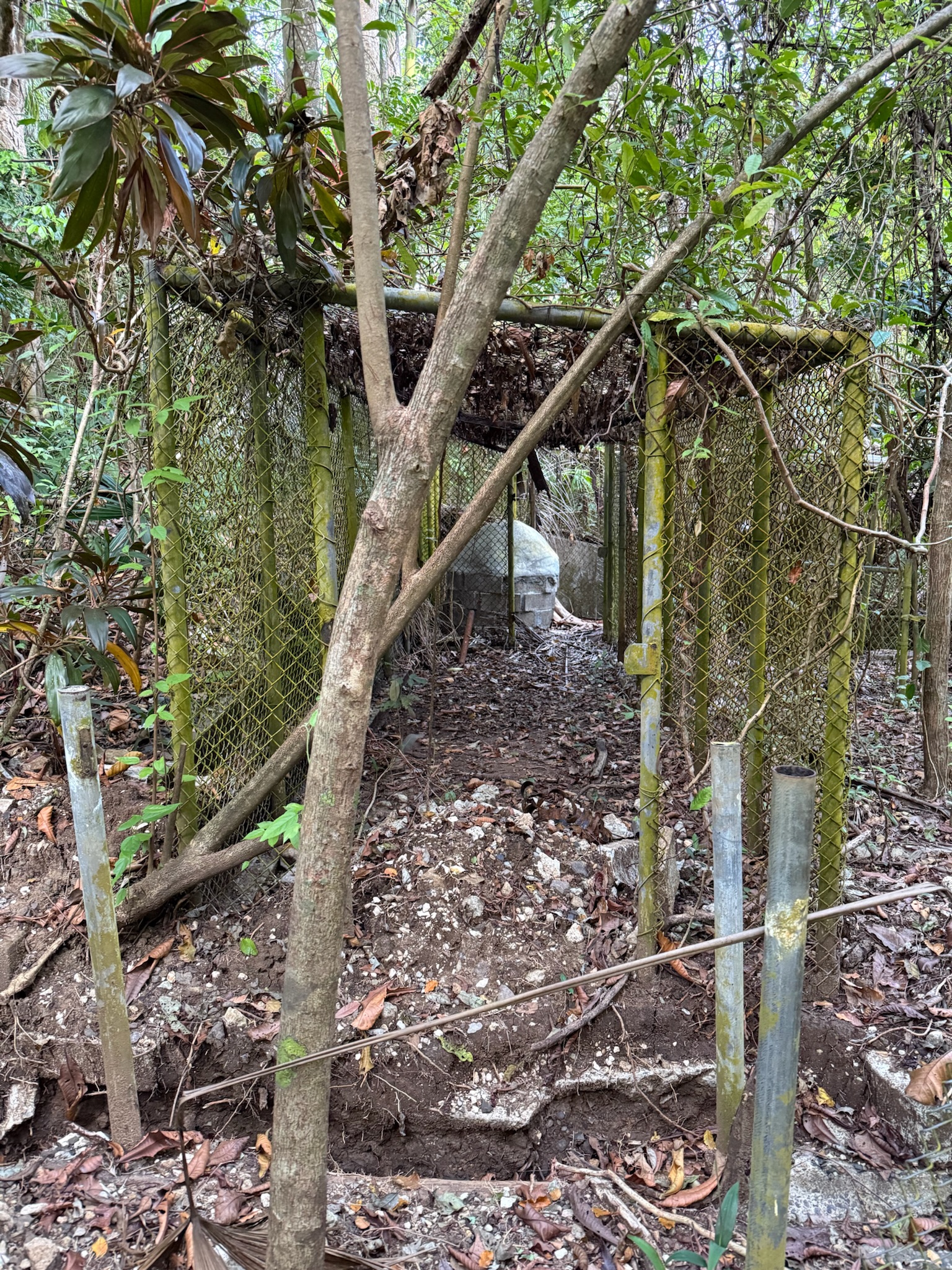
We had to watch our step because someone had dug up all the pipes and there were holes and trenches all throughout the zoo grounds. Carlos pointed out a trail of leaf cutter ants that had built a highway through the debris on the ground.
A beautiful trogan landed on a tree branch near us and posed for photos.
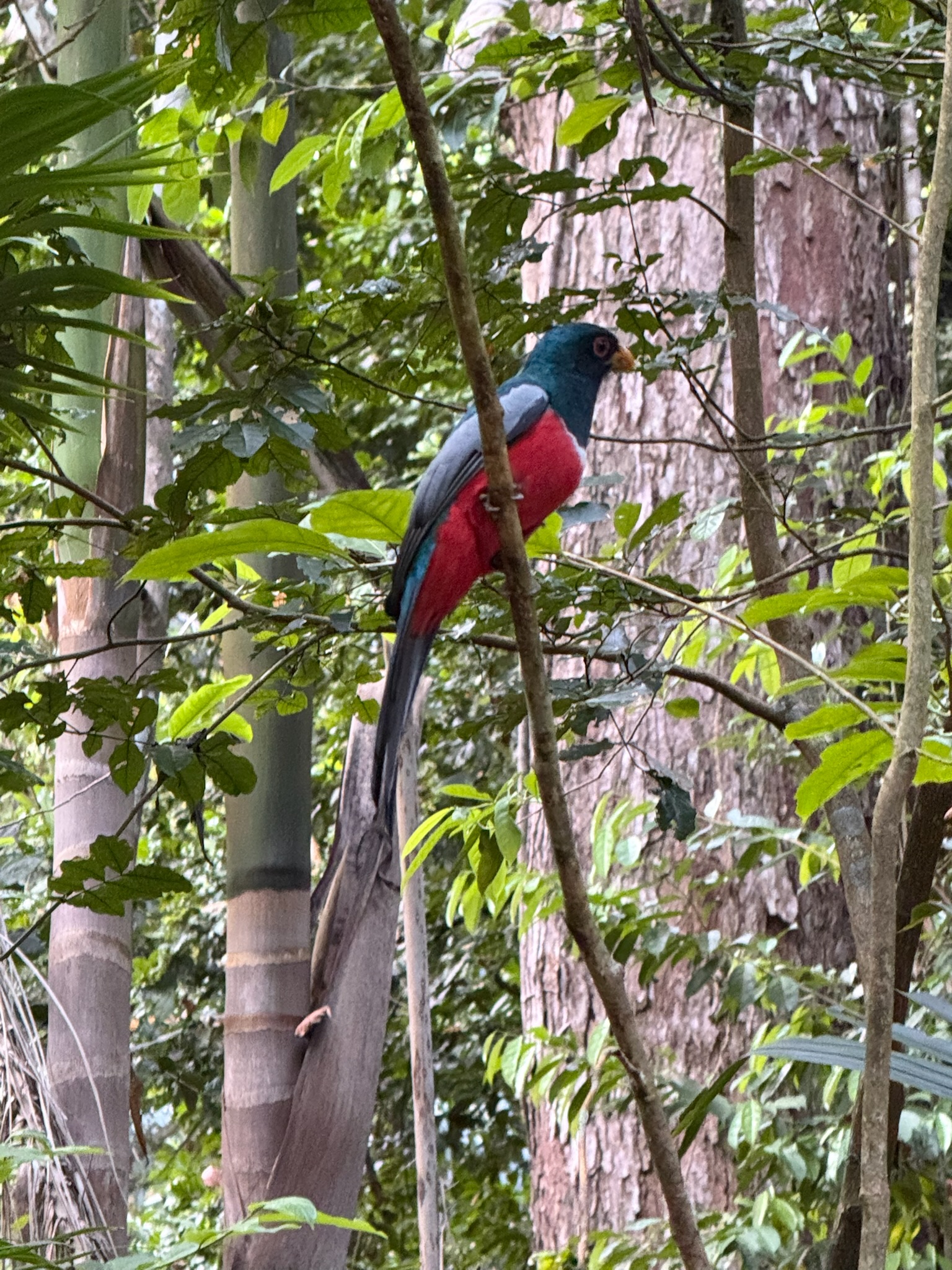
Then it flew to a branch a few feet away, posing its backside for us. Carlos said that while trogans were common in Panama, this particular color of bird was rare.
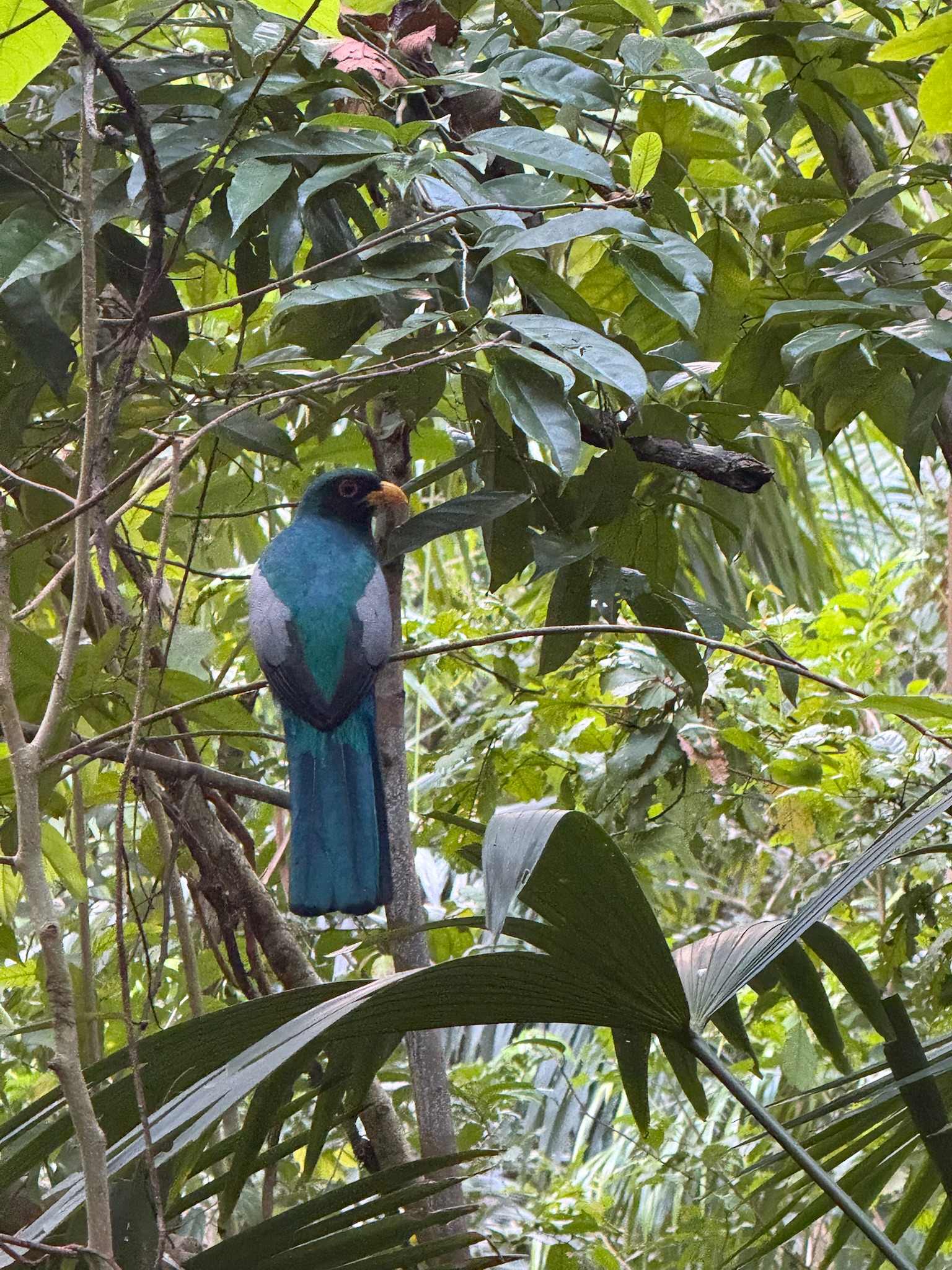
We walked up a hill that we are pretty sure had a battery underneath of it, and through an opening in a wall.
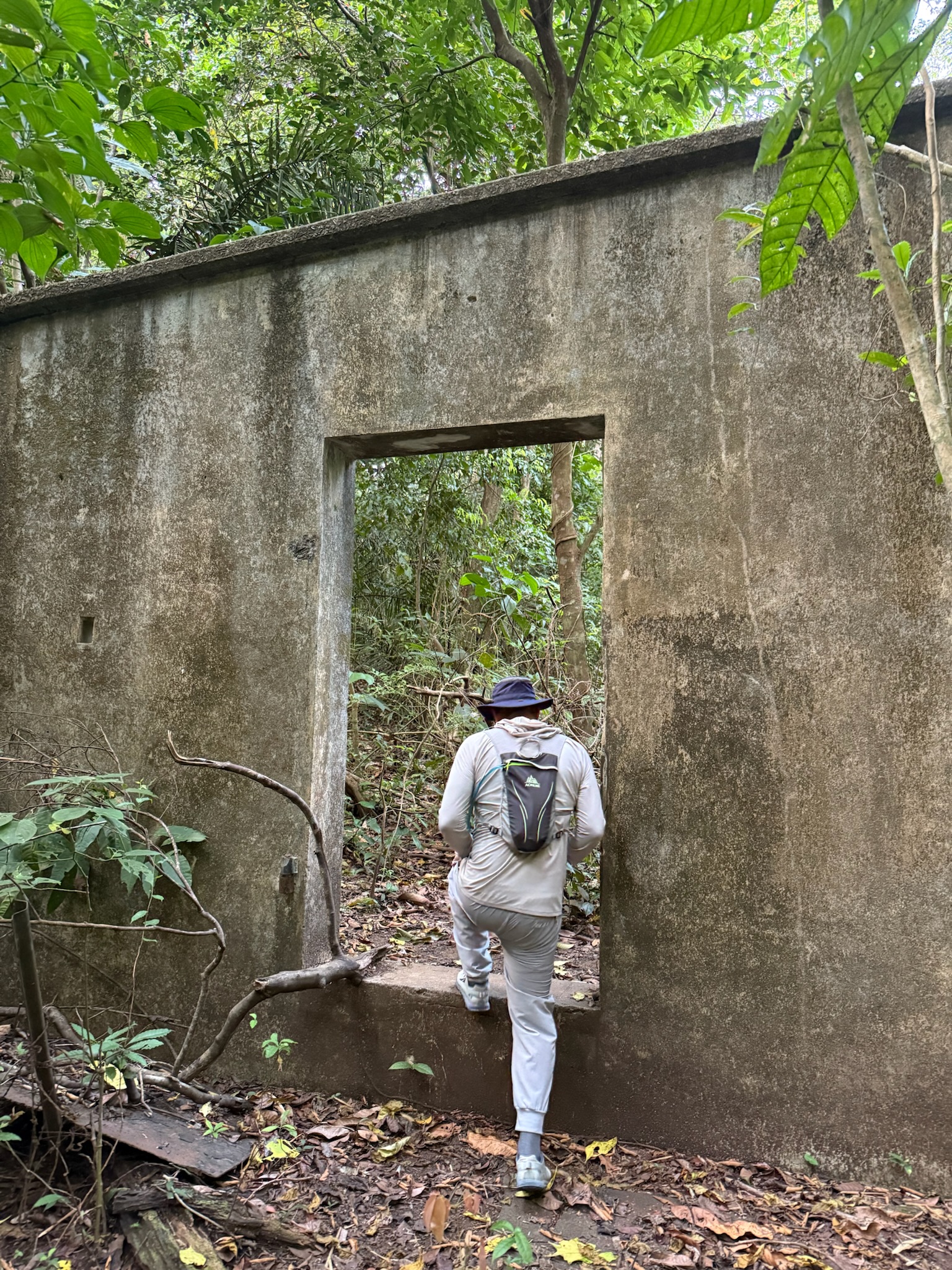
We followed a trail to a staircase that led down to the south end of the battery that we’d explored the week prior.
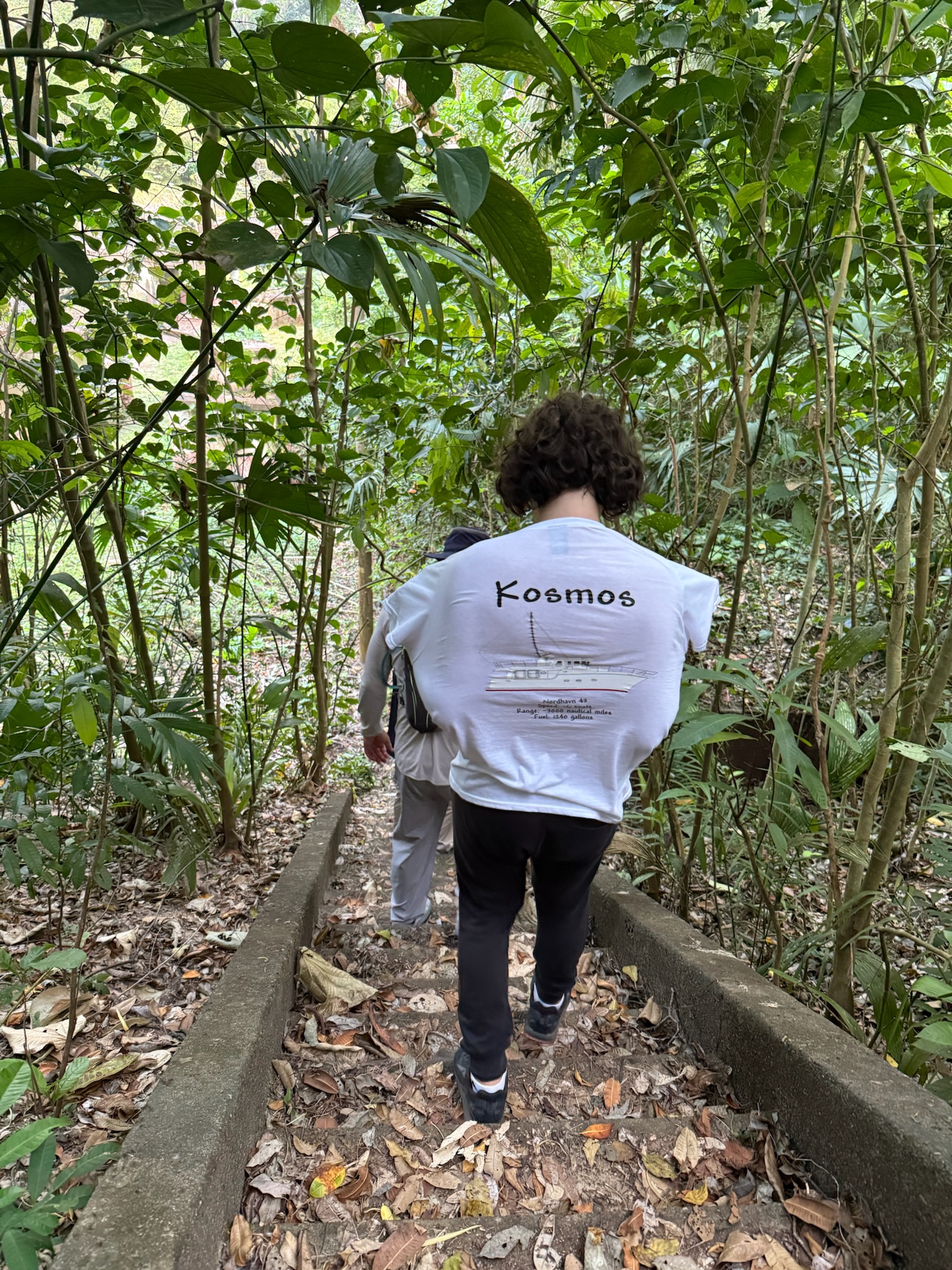
Carlos said that all the batteries had been built during WWII. The Ft. Sherman side had focused on attacks from the Germans, the Panama City side had focused on attacks from the Japanese.
We walked the length of the battery, then went inside. Carlos pulled out a flashlight and stopped at the entrance of a pitch black corridor. He pointed out a track that used to be on the ceiling, and explained that materials were carted throughout the battery on these ceiling tracks.
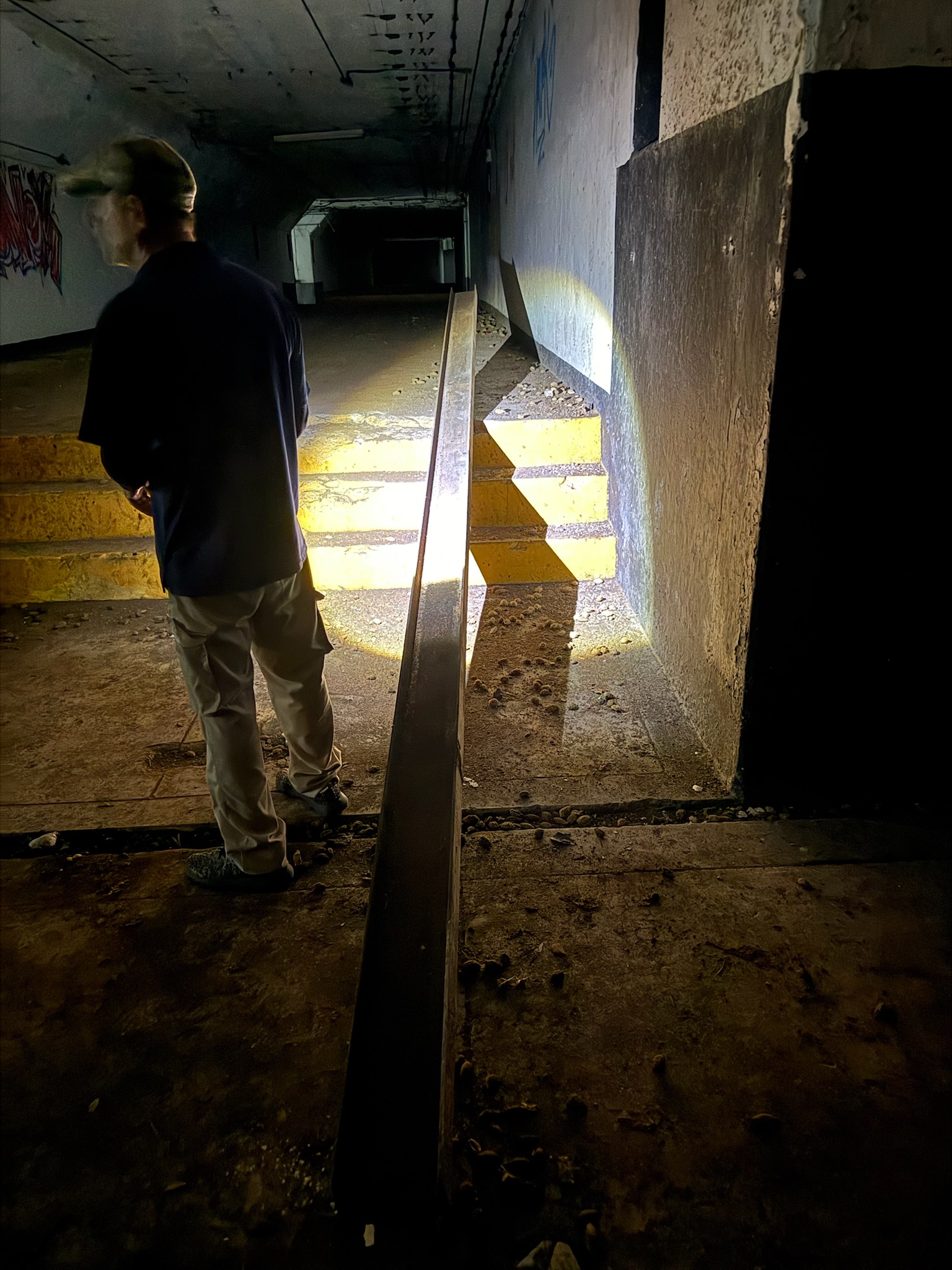
There were seeds of what looked like a stone fruit covering the floor. Carlos said they were almonds – that the critters would bring the almond fruit in here to eat the fruit and then discard the seeds. There were quite a few large cockroaches, too.
We walked down the corridor. We turned off into a few side rooms, including one that was a control center.
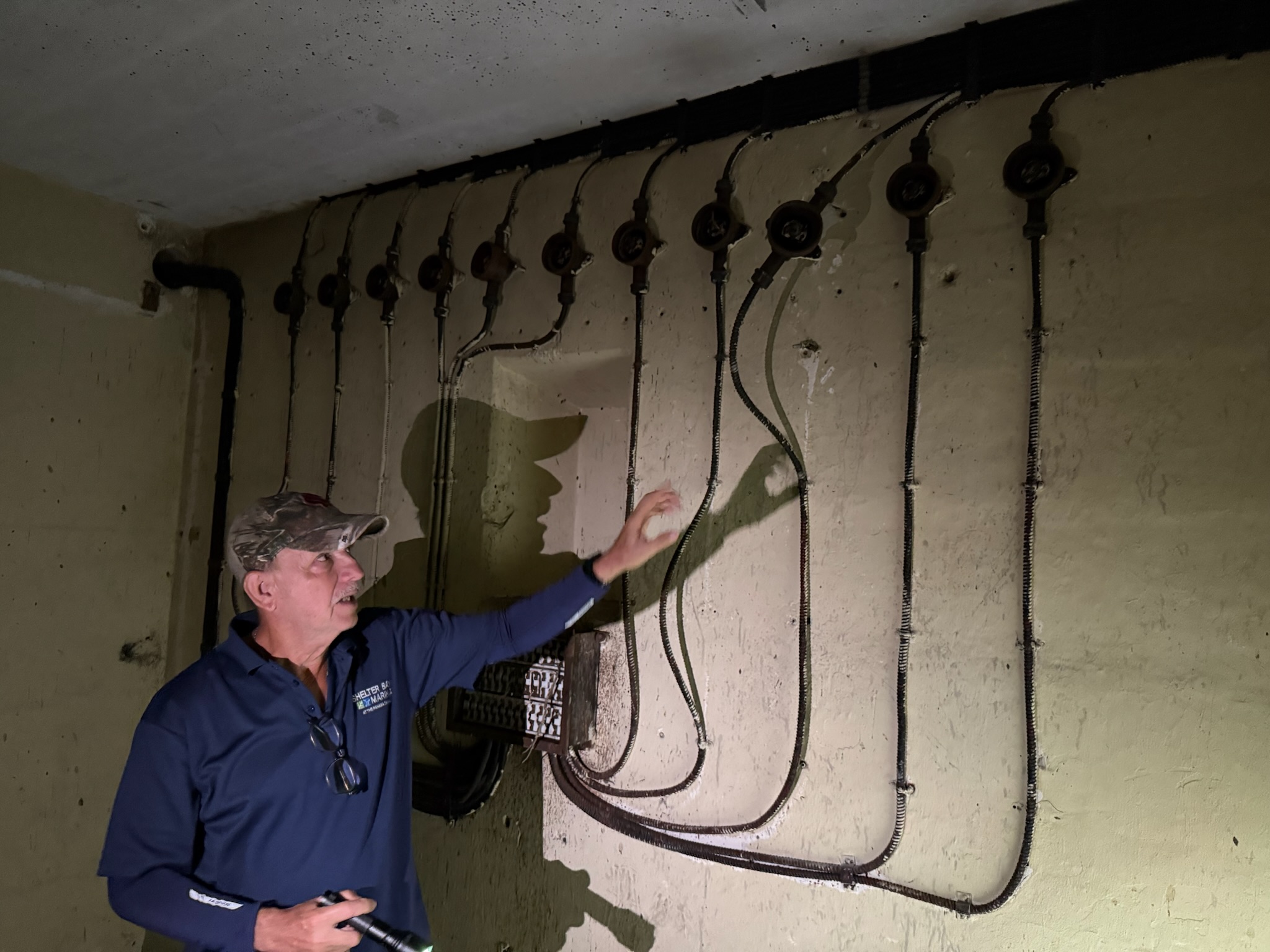
He showed us a secret passageway, but we did not go inside it to see where it led to.
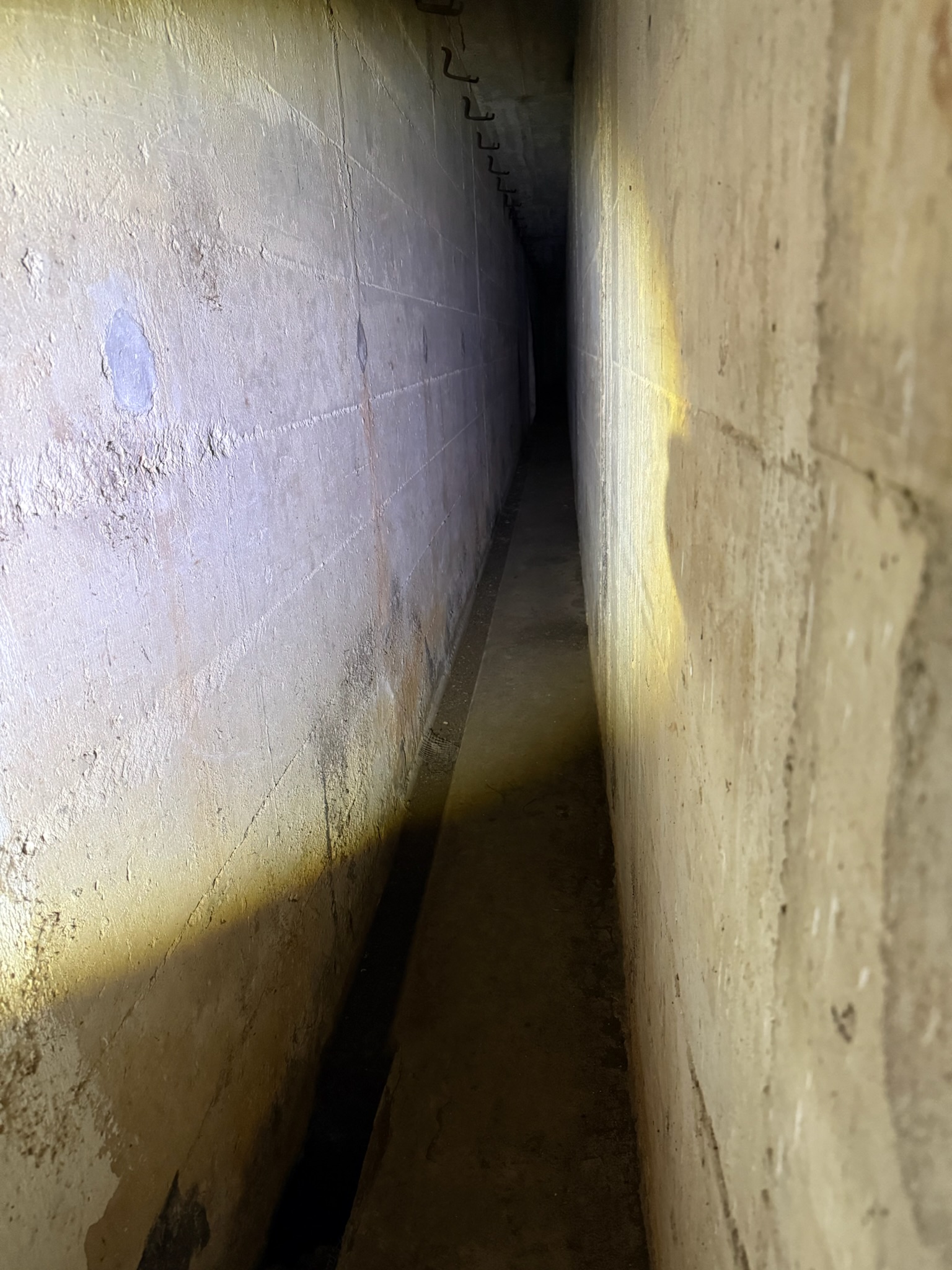
And, it was no surprise that graffiti artists had found their way in.
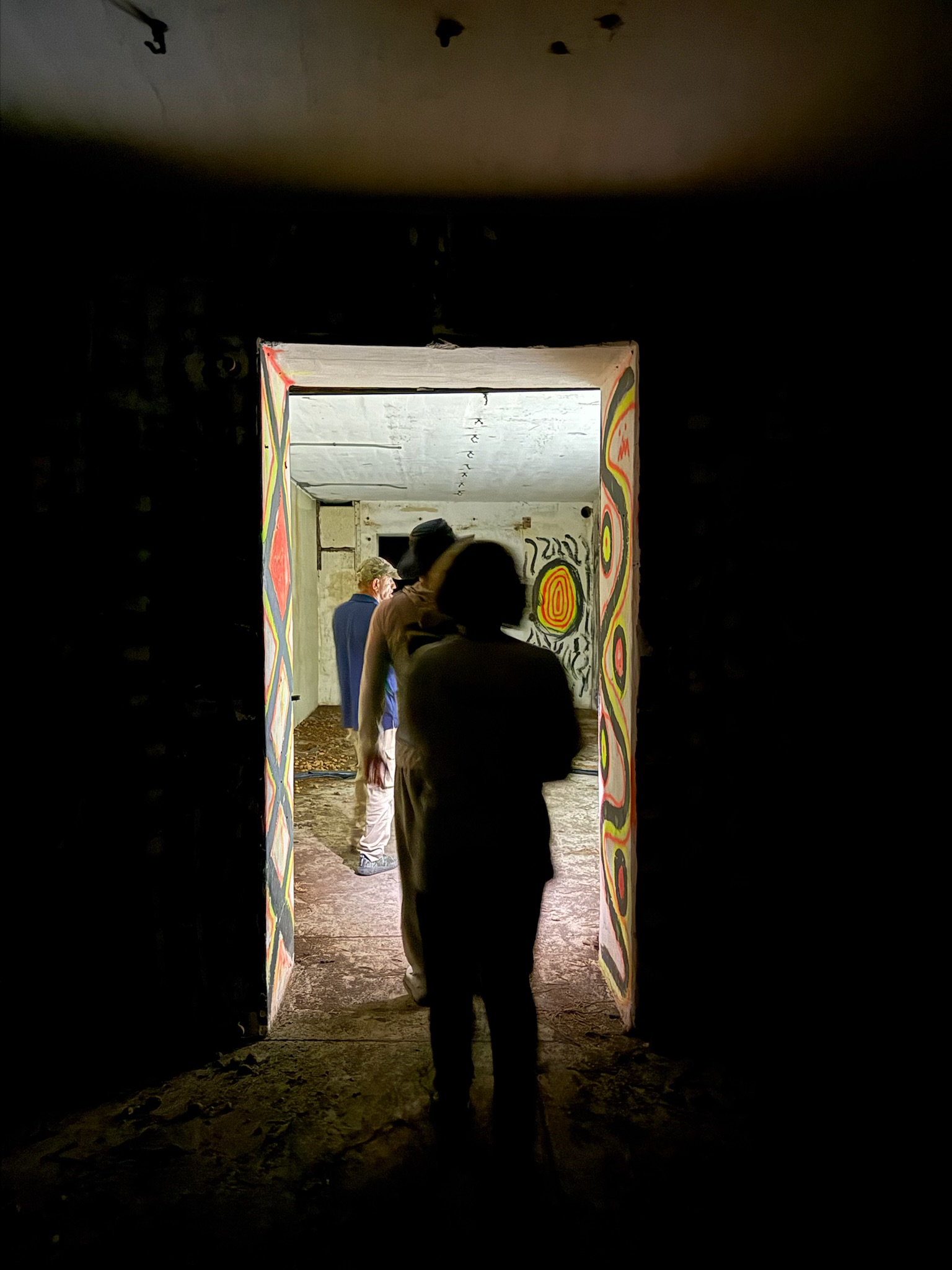
The corridor ran the length of the battery, emerging back at the south end. Christi emerged feeling like this place was a creepier, modern day version of the Castillo de San Lorenzo, and pondered how little warfare had changed over the centuries.
From there headed back to the marina. Christi and Eric had enjoyed the tour and were excited to learn so much about the plants, animals and history of the area. Keith is not a fan of the jungle or the bunkers, so he was a bit traumatized.
